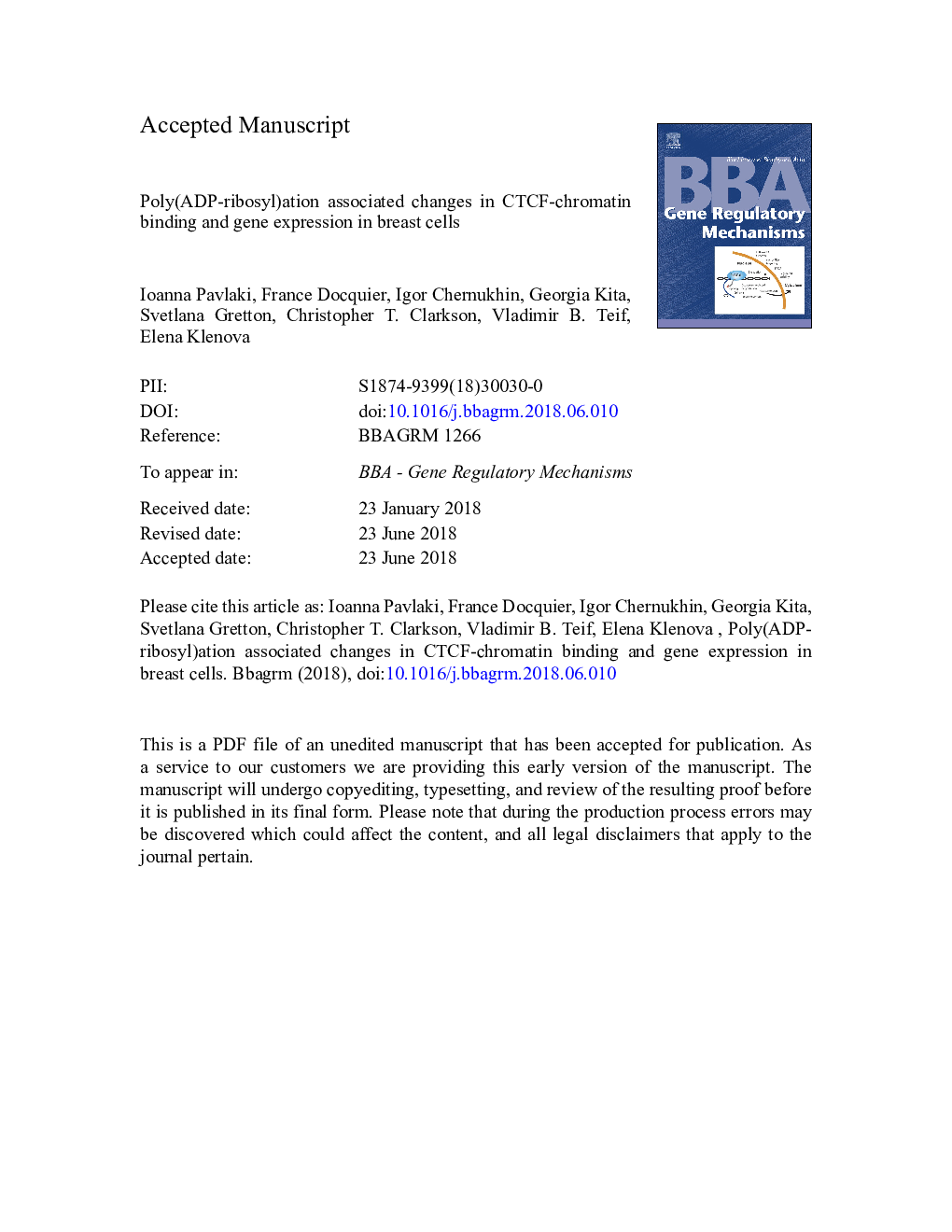| Article ID | Journal | Published Year | Pages | File Type |
|---|---|---|---|---|
| 8300254 | Biochimica et Biophysica Acta (BBA) - Gene Regulatory Mechanisms | 2018 | 34 Pages |
Abstract
CTCF is an evolutionarily conserved and ubiquitously expressed architectural protein regulating a plethora of cellular functions via different molecular mechanisms. CTCF can undergo a number of post-translational modifications which change its properties and functions. One such modifications linked to cancer is poly(ADP-ribosyl)ation (PARylation). The highly PARylated CTCF form has an apparent molecular mass of 180â¯kDa (referred to as CTCF180), which can be distinguished from hypo- and non-PARylated CTCF with the apparent molecular mass of 130â¯kDa (referred to as CTCF130). The existing data accumulated so far have been mainly related to CTCF130. However, the properties of CTCF180 are not well understood despite its abundance in a number of primary tissues. In this study we performed ChIP-seq and RNA-seq analyses in human breast cells 226LDM, which display predominantly CTCF130 when proliferating, but CTCF180 upon cell cycle arrest. We observed that in the arrested cells the majority of sites lost CTCF, whereas fewer sites gained CTCF or remain bound (i.e. common sites). The classical CTCF binding motif was found in the lost and common, but not in the gained sites. The changes in CTCF occupancies in the lost and common sites were associated with increased chromatin densities and altered expression from the neighboring genes. Based on these results we propose a model integrating the CTCF130/180 transition with CTCF-DNA binding and gene expression changes. This study also issues an important cautionary note concerning the design and interpretation of any experiments using cells and tissues where CTCF180 may be present.
Related Topics
Life Sciences
Biochemistry, Genetics and Molecular Biology
Biochemistry
Authors
Ioanna Pavlaki, France Docquier, Igor Chernukhin, Georgia Kita, Svetlana Gretton, Christopher T. Clarkson, Vladimir B. Teif, Elena Klenova,
